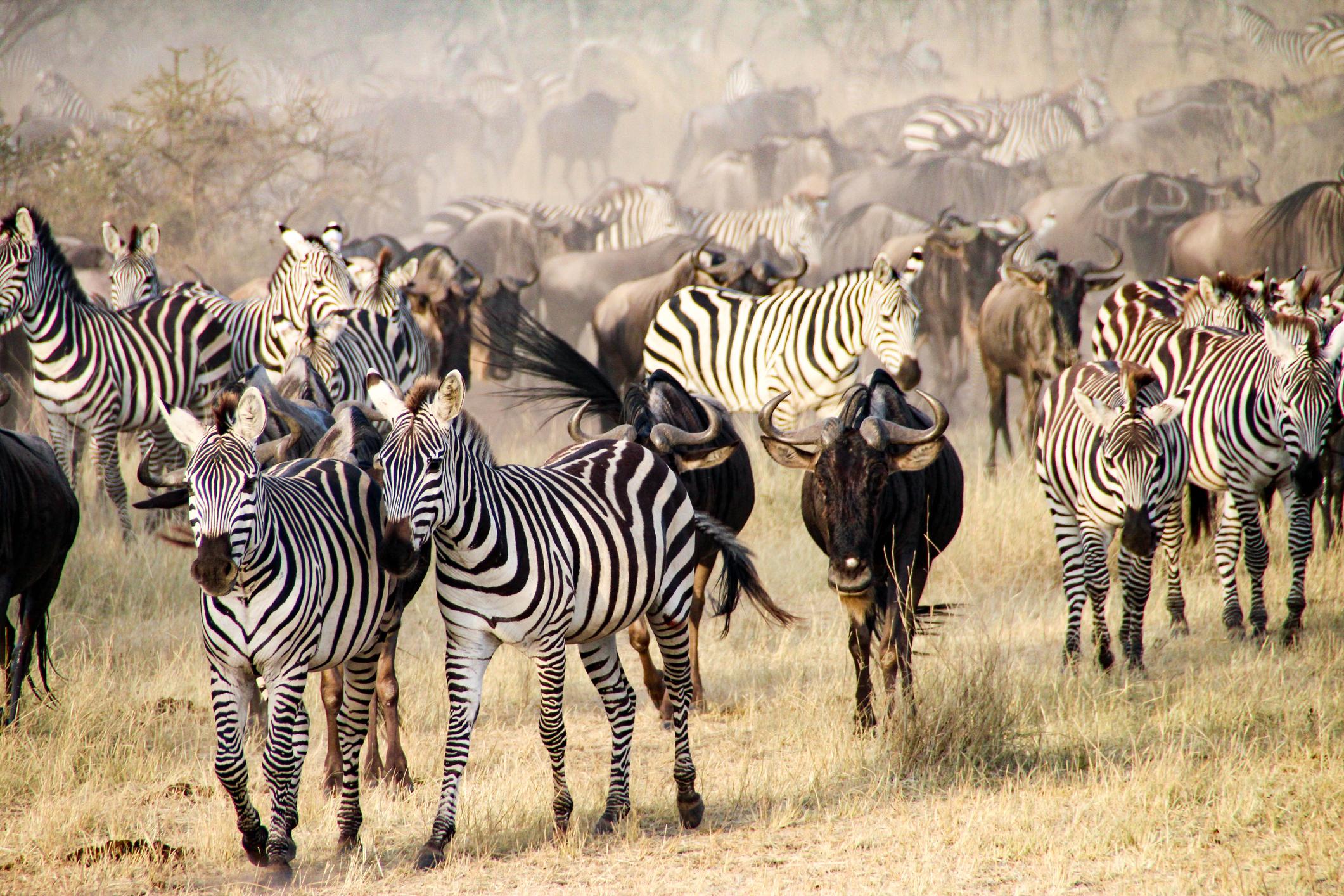The East African country of Tanzania is known for its rich tapestry of landscapes, from the wild plains of the Serengeti to the snowcapped, flat-topped summit of Kilimanjaro. The country’s northeast is mountainous, home to the Usambara and Pare ranges, while to the west of that lie the Crater Highlands with their sunken volcanic calderas. The east coast faces the Indian Ocean, where you’ll also find the idyllic island of Zanzibar; while the vast Lake Tanganyika lies across the western border.
These awe-inspiring landscapes are populated by a huge variety of wildlife. It’s estimated that there are more than four million wild animals in Tanzania, around 430 different species and subspecies - roughly 20% of Africa’s large animal populations. You’ll also find an abundance of insects, animals and around a thousand species of bird, including the endangered grey crowned crane, the country’s national bird.
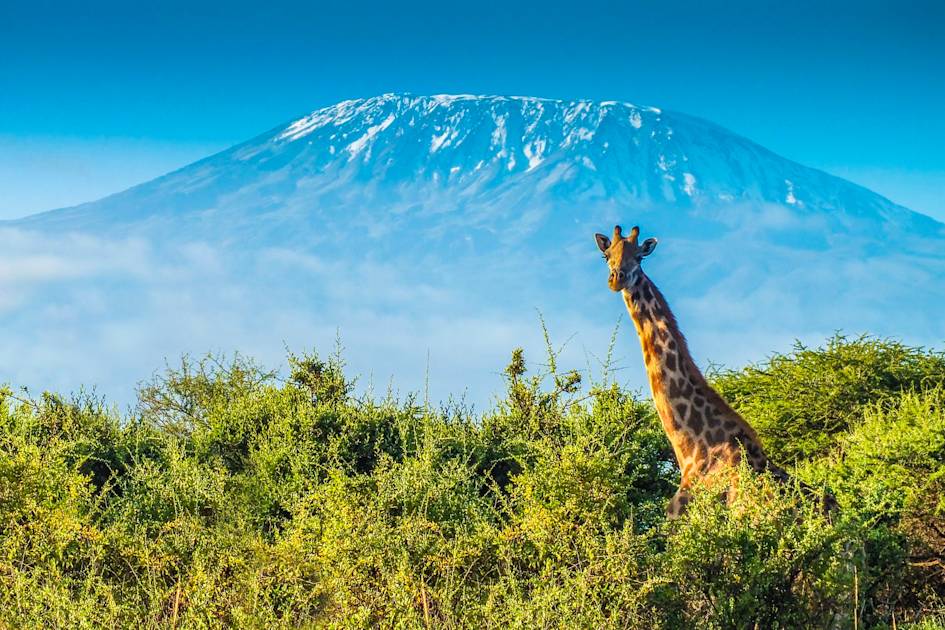
Such an abundance of animal life makes Tanzania one of the best places in Africa to go on safari. Particularly iconic sights are the Great Migration - when 1.5 million wildebeest, approximately 200,000 zebras and 30,000 Thomson’s gazelle thunder across the Serengeti in search of greener grazing grounds - and the Ngorongoro Crater, one of the most wildlife-dense areas in Africa. Go on a Tanzanian safari and you’ll have a chance to spot the ‘Big Five’: lion, rhino, leopard, elephant and Cape buffalo, all of which call parts of Tanzania home.
But considering the huge number of national parks and nature reserves in Tanzania, where do you start? For first time visitors, we’d recommend the famous ‘northern circuit’, which encompasses Serengeti National Park, Ngorongoro Crater, Lake Manyara and Tarangire - all excellent for spotting big game. The ‘southern circuit’ is quieter - encompassing Ruaha National Park and Nyerere National Park - and while there isn’t such a high density of wildlife, you’ll feel very much off the beaten path. Then there’s the remote Mahale Mountains in the west, where you can go chimpanzee trekking. Here’s a little more detail on some of our favourite animal-watching spots.
Where to Go On Safari in Tanzania
1.Lake Manyara National Park
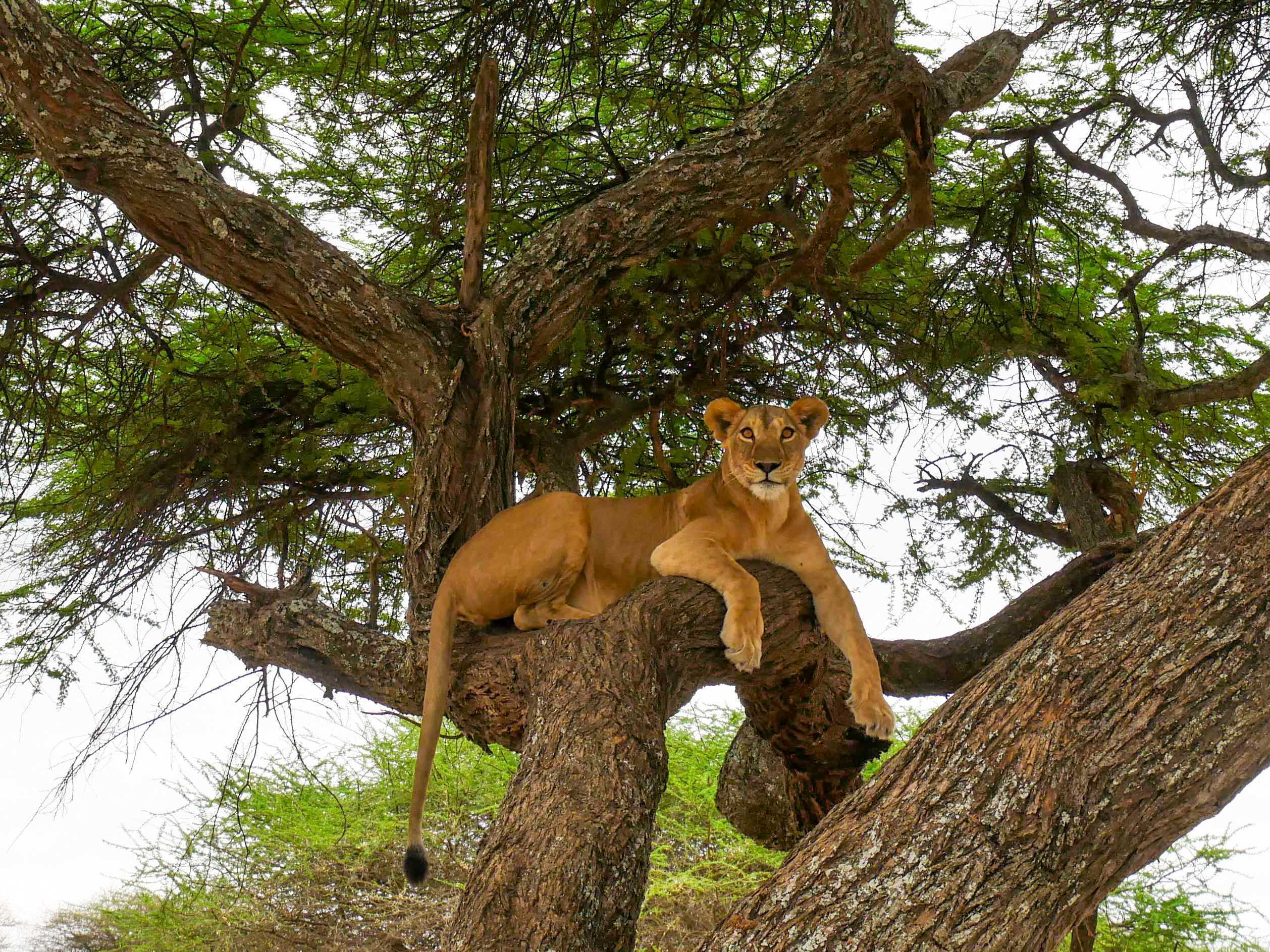
Best for: Tree-climbing lions
This national park is situated in northern Tanzania, in a depression in the Rift Valley system. Its diverse habitats - from its vast soda lake to its groundwater forest and the rocky escarpment in the west - are ideal for exploring on a safari.
The park is famous for its tree-climbing lions, and for having some of the largest baboon and elephant populations in Africa. You’ll also find animals such as buffalo, Masai giraffe and impala near the lake, or in the forested valley slopes. The shores of Manyara Lake attract around 400 species of birds, many of them migratory - the lake is known for the vast flocks of flamingos that visit during the wet season.

2. The Ngorongoro Conservation Area
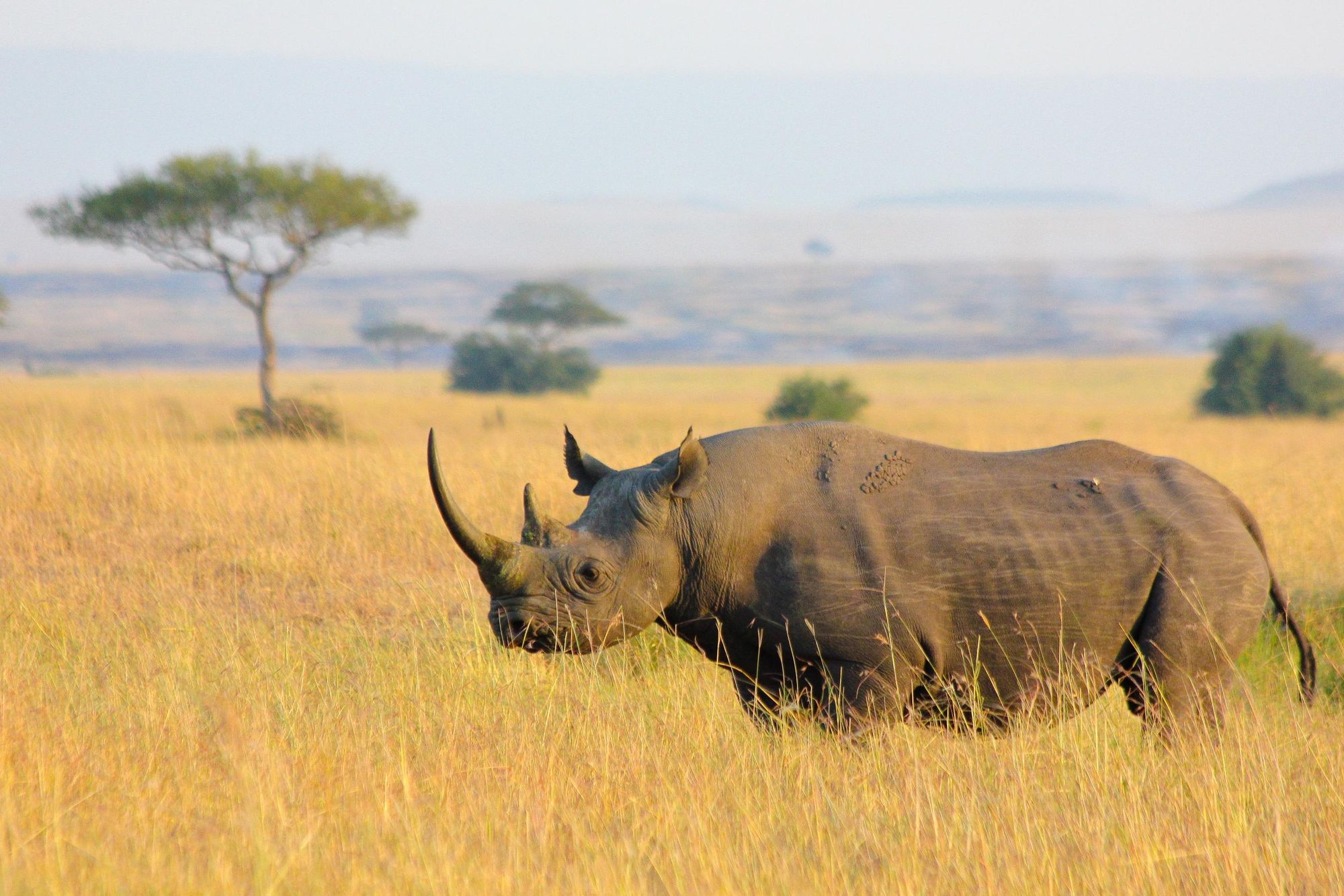
Best for: Seeing the ‘Big 5’
The Ngorongoro Conservation Area is a UNESCO World Heritage Site, which consists of highland plains, savanna and forest; where wildlife coexists alongside the semi-nomadic Maasai people. It’s home to approximately 25,000 large mammals, including some of Tanzania's last remaining black rhino.
It also includes the Ngorongoro Crater, the world’s largest caldera, which is one of the most densely populated wildlife areas in Africa, and the most popular destination for a Tanzania safari. Supported by year-round water and fertile grazing areas, the crater is packed with animals, including herds of wildebeest, zebras, buffalos, warthogs, hippos and elephants, as well as predators such as lions, hyenas, jackals and cheetahs.
3.Tarangire National Park
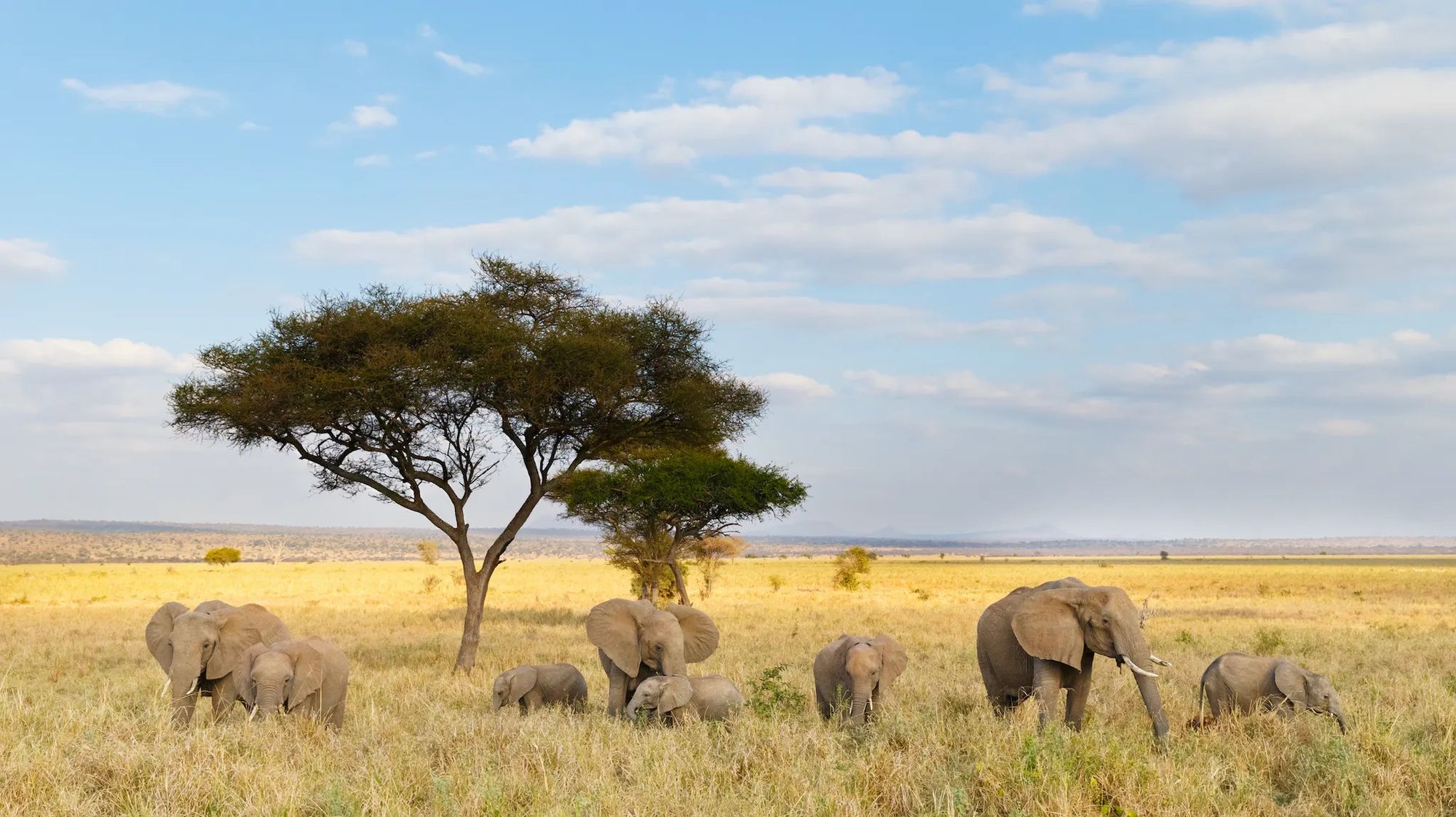
Best for: a mini-migration of different animal species
This vast national park covers an area of 1615.5 square miles (2,600 sq km), and consists of dry savannah studded with baobab trees, and pockets of woodland. The River Tarangire runs through the park, and is a lifeline for animals during the dry season, as it’s their only water source.
Visit during dry season (June to November) to witness a mini-migration, as large numbers of wildebeests, elephants, gazelles, zebras and more come to the river to drink. But there’s animals living in the park year-round too - keep an eye out for large herds of elephants, giraffes snacking on acacia trees, and perhaps even some tree-climbing pythons. There are also several rare species in the park, including the greater kudu (a woodland antelope), the fringe-eared oryx and ashy starlings.
4. Mahale Mountains National Park
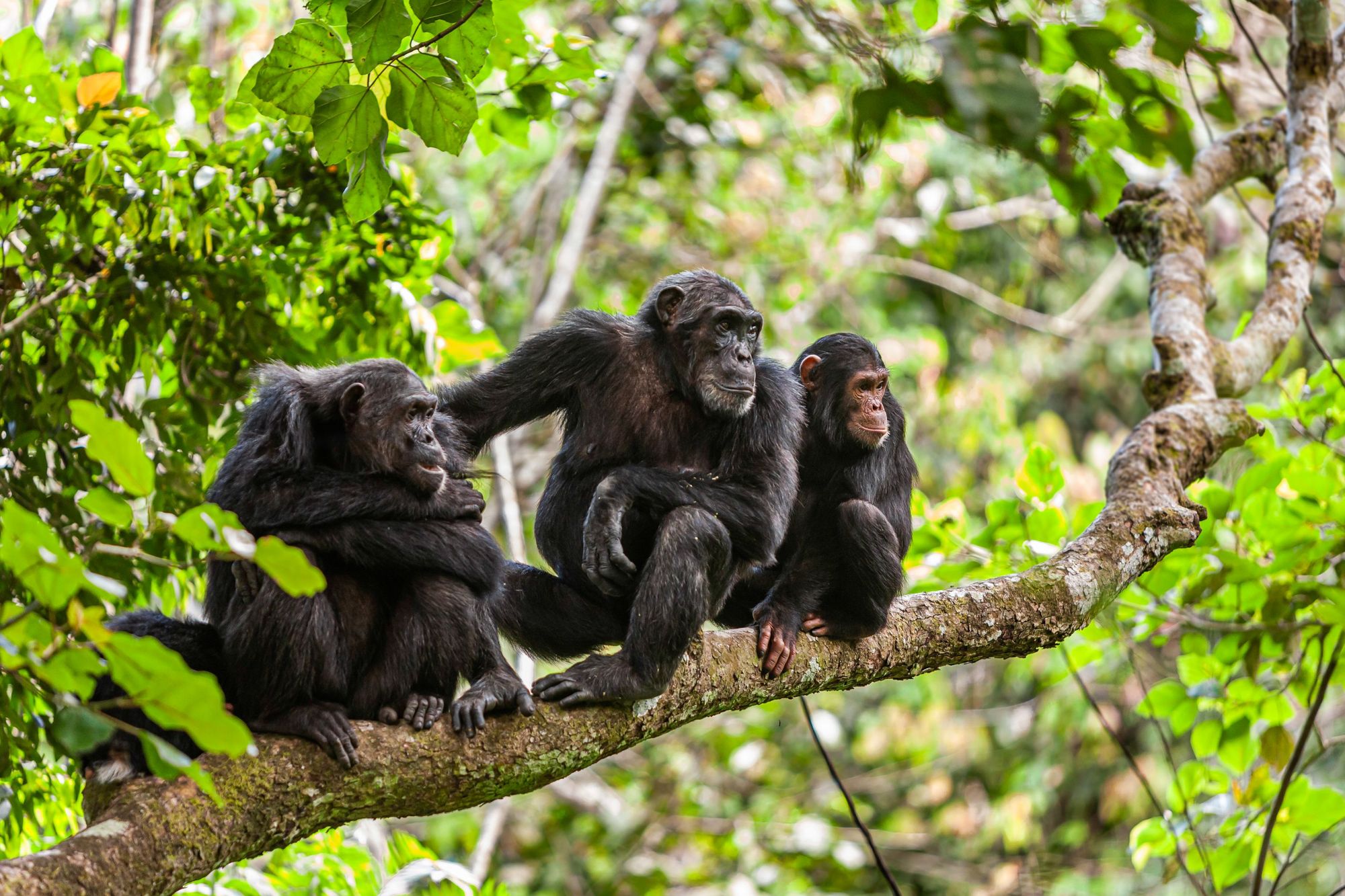
Best for: tracking chimpanzees
The Mahale Mountains National Park is located in the far west of Tanzania, on the eastern shores of Lake Tanganyika (the world’s longest freshwater lake). It’s worth visiting for the landscapes alone - lakeside beaches of powdery white sand, surrounded by mountains carpeted in luxuriant forest. Despite its beauty, the park sees relatively few visitors as it’s not easily accessible - it can only be reached by water or air.
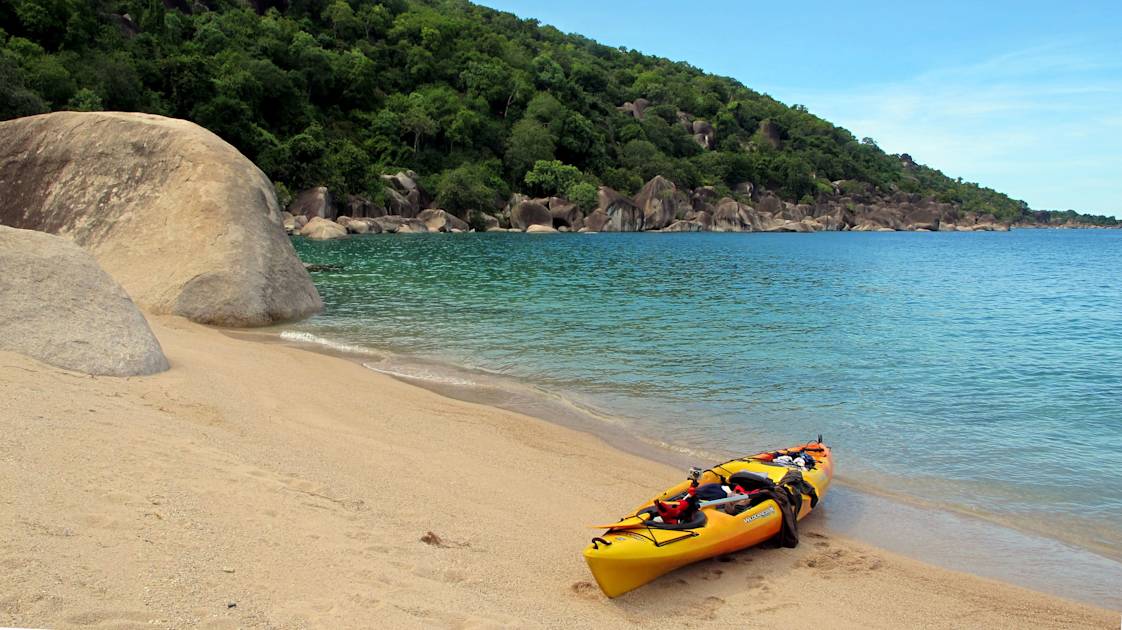
The park is home to a wide variety of animal species, from lions to elephants and blue monkeys. But it’s best known for having the biggest known population of eastern chimpanzees in the world. You can see them on a walking safari with an experienced local guide - groups are kept small (to a maximum of six) and tours limited to an hour, ensuring the chimps don’t contract any human illnesses.
Read more: A Guide to Mahale Mountains National Park in Tanzania
5. Ruaha National Park

Best for: elephant-spotting
This vast national park is the largest protected area in Tanzania, covering an area of 12,567 square miles (20,226 sq km). It has wide expanses of savannah, pockets of acacia woodland and mountains in the south and west. It’s bisected by the River Ruaha, where animals often come to drink - you might see crocodiles along its shores, or hippos in the water.
The park boasts the largest number of elephants in Tanzania, as well as a large population of greater kudu antelopes. Other species include giraffe, hartebeest, lion, cheetah, leopard and spotted hyena, as well as over 570 species of bird. During December and January you might be able to spot Eleanora’s falcon, a rare bird of prey species. Aside from vehicle safaris, there are also hides and treehouses with views of water sources where animals come to drink.
6. Serengeti National Park
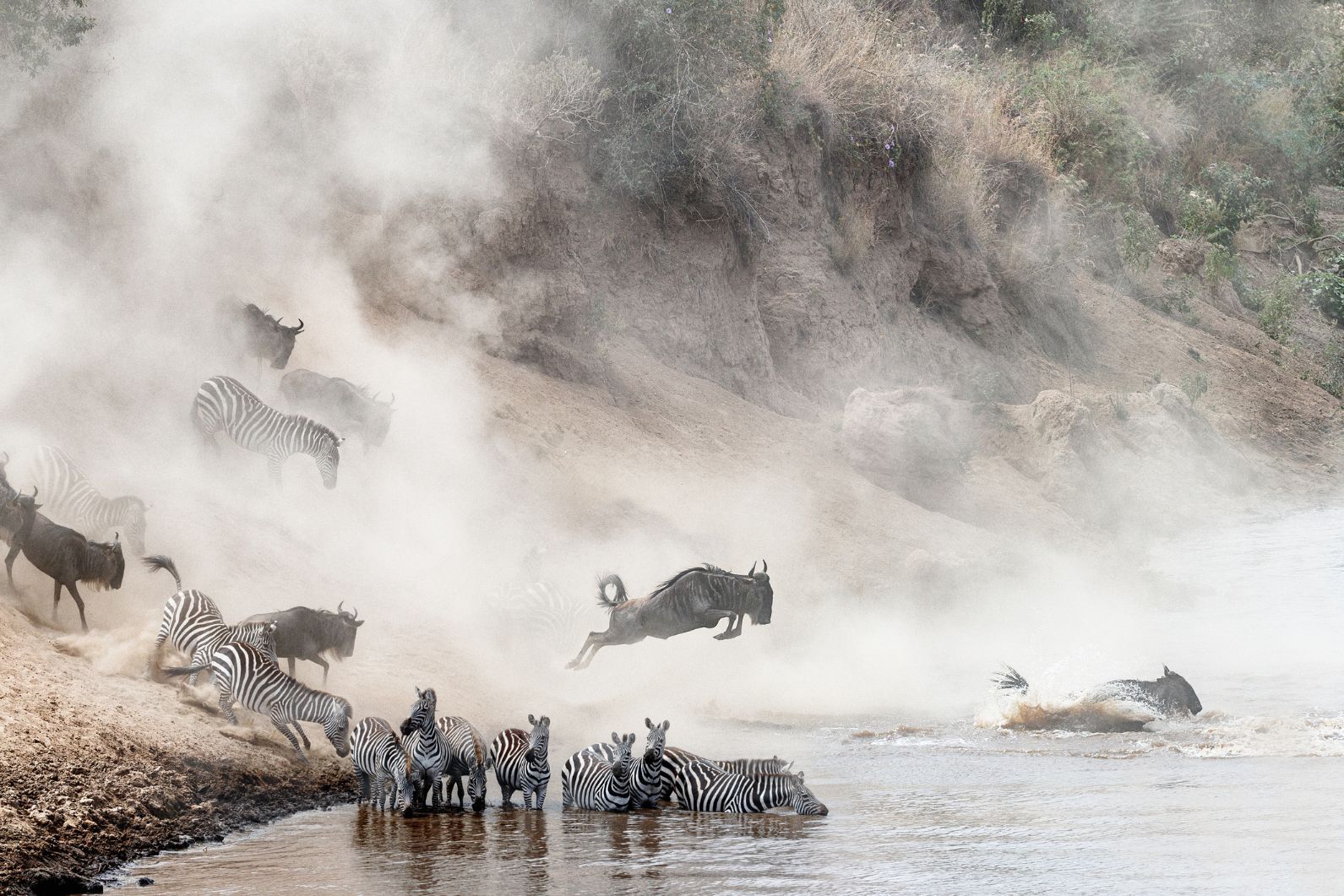
Best for: the annual wildebeest migration, and spotting black rhinos
One of the most famous parks in Africa, the vast plains, hills and woodlands of the Serengeti National Park teems with wildlife. It’s home to the ‘Big Five’ - in fact, there are around 4,000 lions living within the park!
The Serengeti is a UNESCO world heritage site, and is renowned for being home to the annual Great Migration, when over 1.5 million wildebeest and other herbivores (such as gazelles and zebras) make their way across the Serengeti from south to north, towards the Maasai Mara in search of greener grazing, followed by their predators.The best time to visit is normally considered to be between July and October, when the animals cross the vast Mara River - one of the most adventurous ways to see this is on a hot air balloon safari.
7. Nyerere National Park

Best for: spotting the ‘Big Five’ without the crowds
Formerly known as Selous Game Reserve, Nyerere National Park is the largest park in East Africa and has a wide variety of habitats, from savannah to riverine forest, lakes to miombo woodlands - three rivers flow through it. It’s a great place to see the Big Five without the crowds, thanks to its large footprint.
Look out for wild dogs, lions, buffaloes, elands, rhinos and much more. Alongside walking and vehicle safaris, you can also take boat safaris along the Rufiji River, where you might see hippos and crocodiles.
What is the Best Time for a Safari in Tanzania?
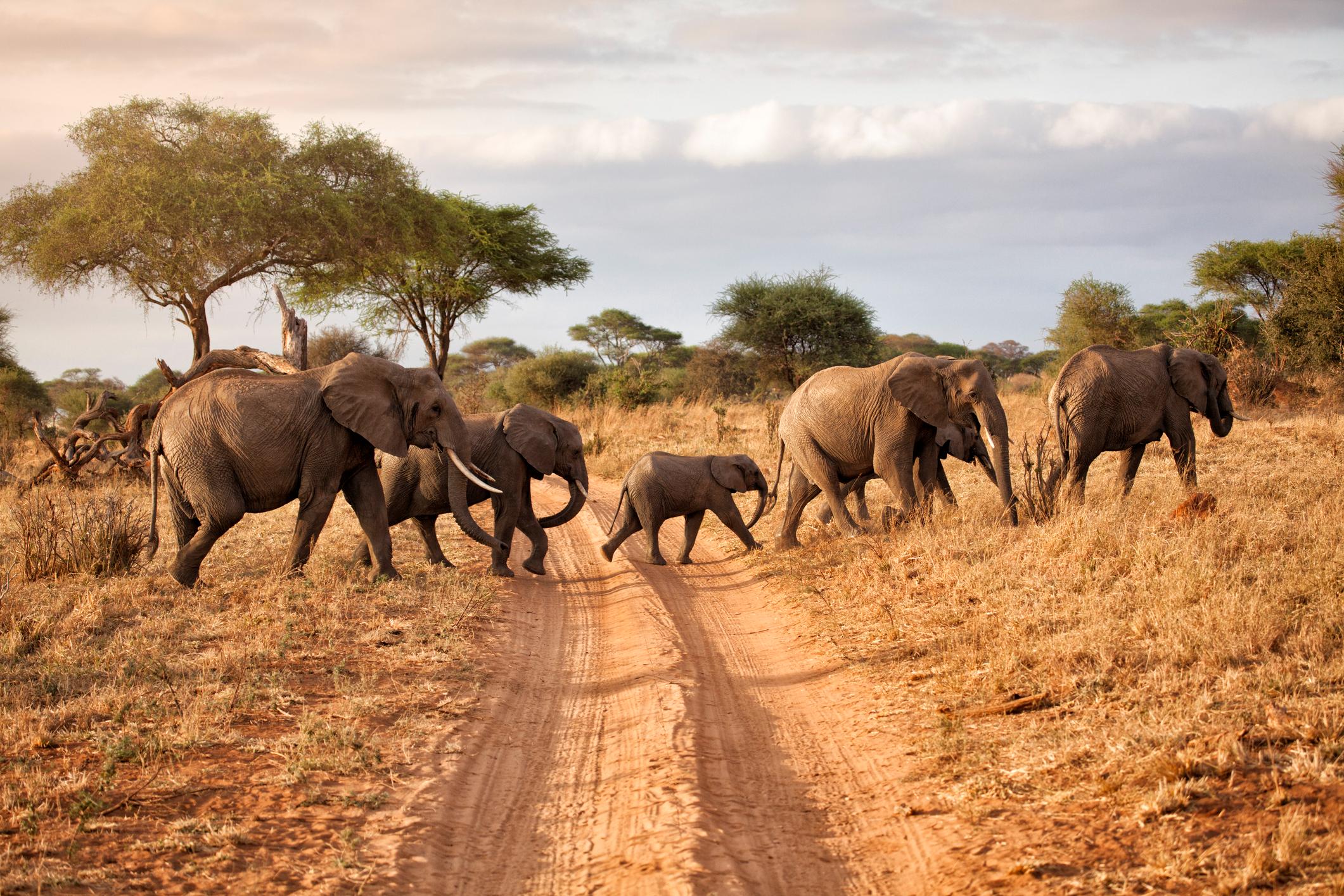
The best time to visit Tanzania for a safari is often suggested to be during the dry season, between late June and October. This is because animals are attracted en masse to watering holes and rivers; plus, because the vegetation is drier, they’re easier to track and spot in the trees and the savannah. The dry season also brings ideal weather for trekking and for beach trips. The only downside is that this is peak season, making prices a little higher and the parks busier.
Tanzania actually has two rainy seasons - the ‘long rains’ of April to May and the ‘short rains’ of November to December. During the long rains there are tropical downpours and some safari camps might even close - we wouldn’t recommend visiting during these months. The short rains are, well, much shorter - you’ll experience the occasional shower. It’s not a bad time to visit, as the parks are less crowded and the migratory birds are beginning to arrive.
January to March is also a good time to visit Tanzania. This is calving season - approximately 500,000 wildebeest calves will be born in the southern Serengeti - and it’s also rutting season, meaning you’ll see mating battles between males of various animal species.
Inspired? Visit Tarangire, Ngorongoro Crater and Lake Manyara on our Climb Kilimanjaro (5895m) Via the Machame Route & Go On Safari adventure, or the Mahale Mountains on our Kayaking Expedition to the Chimpanzee Forests of Tanzania.


